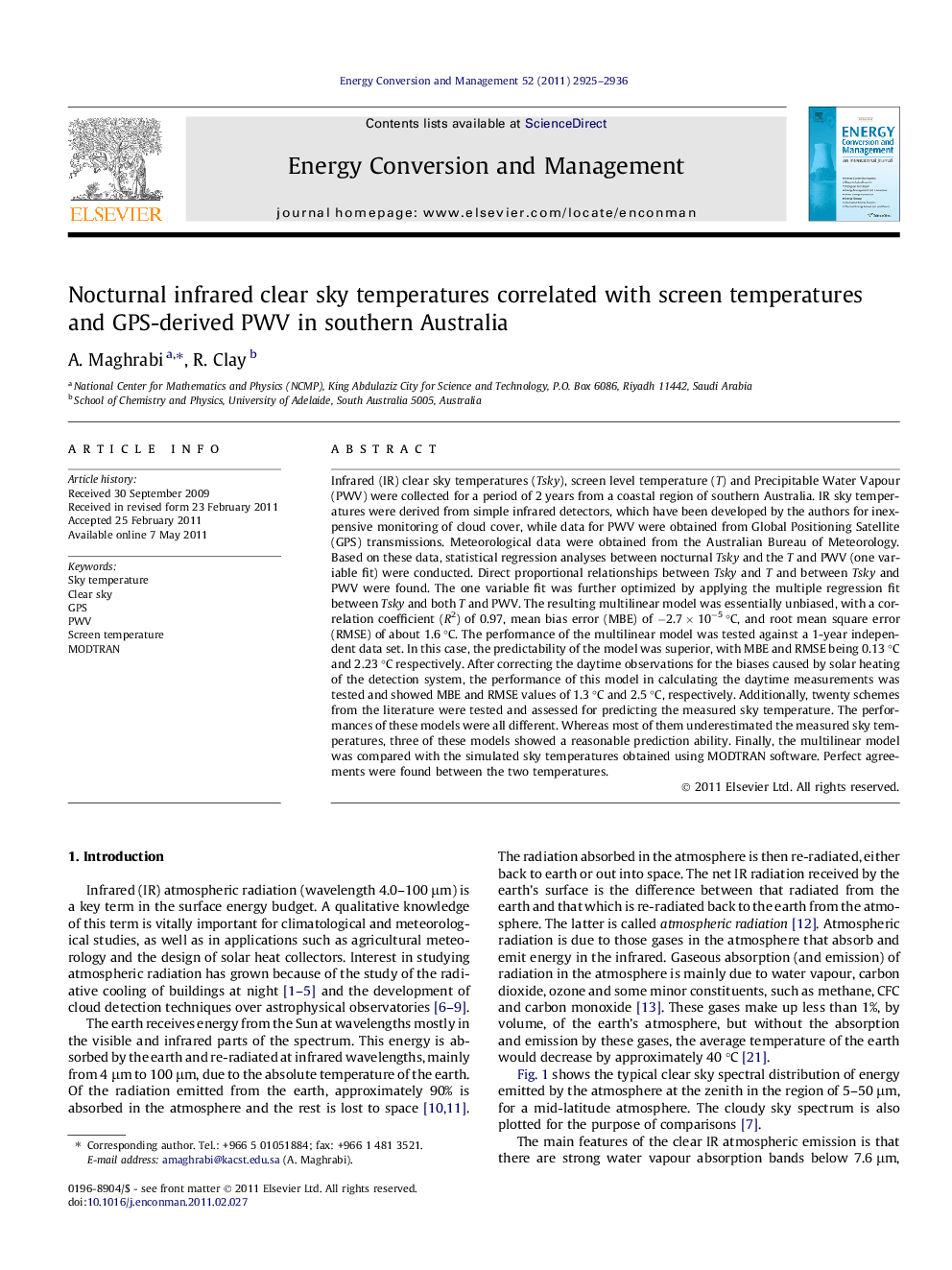| Article ID | Journal | Published Year | Pages | File Type |
|---|---|---|---|---|
| 766047 | Energy Conversion and Management | 2011 | 12 Pages |
Infrared (IR) clear sky temperatures (Tsky), screen level temperature (T) and Precipitable Water Vapour (PWV) were collected for a period of 2 years from a coastal region of southern Australia. IR sky temperatures were derived from simple infrared detectors, which have been developed by the authors for inexpensive monitoring of cloud cover, while data for PWV were obtained from Global Positioning Satellite (GPS) transmissions. Meteorological data were obtained from the Australian Bureau of Meteorology. Based on these data, statistical regression analyses between nocturnal Tsky and the T and PWV (one variable fit) were conducted. Direct proportional relationships between Tsky and T and between Tsky and PWV were found. The one variable fit was further optimized by applying the multiple regression fit between Tsky and both T and PWV. The resulting multilinear model was essentially unbiased, with a correlation coefficient (R2) of 0.97, mean bias error (MBE) of −2.7 × 10−5 °C, and root mean square error (RMSE) of about 1.6 °C. The performance of the multilinear model was tested against a 1-year independent data set. In this case, the predictability of the model was superior, with MBE and RMSE being 0.13 °C and 2.23 °C respectively. After correcting the daytime observations for the biases caused by solar heating of the detection system, the performance of this model in calculating the daytime measurements was tested and showed MBE and RMSE values of 1.3 °C and 2.5 °C, respectively. Additionally, twenty schemes from the literature were tested and assessed for predicting the measured sky temperature. The performances of these models were all different. Whereas most of them underestimated the measured sky temperatures, three of these models showed a reasonable prediction ability. Finally, the multilinear model was compared with the simulated sky temperatures obtained using MODTRAN software. Perfect agreements were found between the two temperatures.
► Model to calculate nocturnal sky temperature in mid-latitude site was developed. ► New data acquired from new instrument. ► Sky temperature correlated with both GPS-derived PWV and screen temperature. ► The model was tested theoretically against MODTRAN software. ► The performance of the model was compared against 20 independent models.
